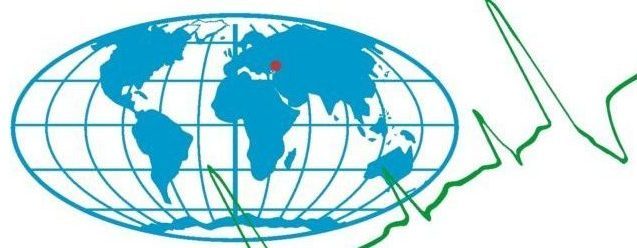A.A. Ibragimova1, A.R. Shagidullin1, V.A. Gabdrahimova1, R.A. Shagidullina2, R.R. Shagidullin1
1Research Institute for Problems of Ecology and Mineral Wealth Use of TAS, RF, Kazan, Daurskaya St.,28.
2Ministry of Ecology and Natural Resources of the Republic of Tatarstan, RF, Kazan, Pavlyukhina St., 75
E-mail: Artur.Shagidullin@tatar.ru
DOI: 10.33075/2220-5861-2021-4-111-117
UDC 502.15
Abstract:
The article focuses on a method for ranking the city territory by the level of atmospheric pollution based on the results of computational modeling of the spread of emissions from stationary sources.When ranking, short-term (peak) and long-term levels of exposure to harmful atmospheric admixtures are analyzed. As indicators of short-term exposure, maximum one-time concentrations are used, expressed in fractions of maximum permissible concentrations (hygienic standards), reference concentrations (acute inhalation risk) and odor thresholds of substances. The ranking of the territory according to the level of the peak short-term impact is carried out by the method of cluster analysis, taking into account all three parameters. Long-term impacts are characterized using a complex air pollution index, which is calculated for five impurities with the highest values of average annual concentrations, expressed as a fraction of average annual maximum permissible concentrations. The gradation of the pollution index is determined based on the analysis of the variation series of its values.
Calculations are carried out using Nizhnekamsk city as an example. Nizhnekamsk is a large center of the petrochemical and oil refining industry. Modeling of the spread of atmospheric pollutants is carried out on the basis of a consolidated database containing the parameters of emissions from all the main stationary sources of the city. Calculations of concentrations are made in the Unified Program for Calculating Air Pollution “Ecolog-Gorod”, which implements the method for calculating the dispersion of atmospheric pollutants approved by the Ministry of Natural Resources of Russia. According to the results of calculations, zones with low, medium and high levels of chemical pollution of atmospheric air are identified on the territory of the city.
Keywords: air pollution, summary calculations, maximum concentration, risk, odor threshold fraction, average annual concentration, air pollution index.
To quote:
REFERENCES
- SanPiN 1.2.3685-21. Gigienicheskie normativy i trebovaniya k obespecheniyu bezopasnosti i (ili) bezvrednosti dlya cheloveka faktorov sredy obitaniya (in Russian). 2021. 496 p.
- R 2.1.10.1920‒04. Rukovodstvo po ocenke riska dlya zdorov’ya naseleniya pri vozdejstvii himicheskih veshchestv, zagryaznyayushchih okruzhayushchuyu sredu (in Russian). 2004. 143 p.
- RD 52.04.667-2005. Dokumenty o sostoyanii zagryazneniya atmosfery v gorodah dlya informirovaniya gosudarstvennyh organov, obshchestvennosti i naseleniya. Obshchie trebovaniya k razrabotke, postroeniyu, izlozheniyu i soderzhaniyu (in Russian). 2005. 52 c.
- Tunakova YU.A., SHagidullina R.A., Novikova S.V., Valiev V.S. Metodologiya normirovaniya prioritetnyh zagryaznyayushchih veshchestv v komponentah urboekosistemy. Kazan: Otechestvo. 2014. 160 p. (in Russian). 2014. 160 с.
- Vedenie sistemy raschetnogo monitoringa za sostoyaniem atmosfernogo vozduha dlya vyyavleniya istochnikov zagryazneniya, deyatel’nost’ kotoryh yavlyaetsya prichinoj povyshennoj zagazovannosti atmosfernogo vozduha v gorode Kazani. Otchet po GK № 20 ME-5s ot 14.02.2020 g. Kazan: IPEN AN RT (in Russian). 2020. 177 с.
- Metody raschetov rasseivaniya vybrosov vrednyh (zagryaznyayushchih) veshchestv v atmosfernom vozduhe. Utv. prikazom Minprirody RF ot 06.06.2017 No 273 (in Russian).
- RD 52.04.186-89. Rukovodstvo po kontrolyu zagryazneniya atmosfery (in Russian). 1991. 683 c.
![]()
